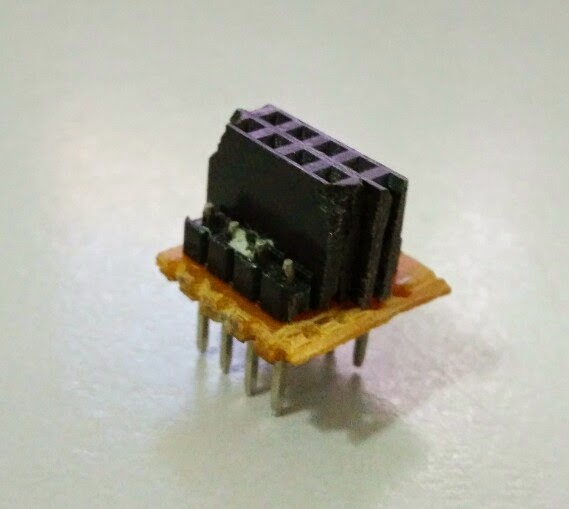 |
| nRF24L01 adapters |
This blog entry is about my process in making an Arduino UNO nRF24L01 Adapter from start to the current version... ( If you would like to order a pair of the nRF Adapter, please click on
nRF Adapter for Sale. )
Do you face the problems of messy jumpers cables like below when using nRF24L01+ with an Arduino UNO on a breadboard ??
 |
| nRF24L01 on breadboard |
Or need to DIY your own adapter to sit in between the breadboard groove like the picture below ?
 |
| DIY nRF for breadboard |
 |
| nRf24L01 on Arduino UNO |
 |
| nRF24L01 with external antenna |
With this problem, I started my journey to solve this problem with a
nRF Adapter... below are pictures of the evolution of the adapter.
Perfboard first version
The orange and white wires fly across the UNO for the 3.3V power needed by the nRF24L01 radio.
 |
| nRF adpater with bottom wiring |
 |
| nRF adapter with top wiring |
PCB Version with 3.3V LDO ( PCB designed by ZXLee ) |
| nRF20L01 adapter DIY PCB 1 |
 |
| nRF24L01 adapter DIY PCB 1 |
 |
| nRF24L01 adapter DIY PCB 1 |
PCB Version 2 with 2 buttons ( PCB designed by Vintronics ) |
| nRF24L01 adapter DIY PCB 2 bottom |
 |
| nRF24L01 adapter DIY PCB 2 top |
We took the above design, dropped the 2 buttons , fine tuned it and made the final version for factory PCB. This is a joint collaboration project between
Arduino for Beginners blog and
Vintronics ..
Final factory made PCB version ( designed by Vintronics & myself )This version have a AMS1117-3.3 at the bottom of the PCB.
 |
| nRF24L01 adapter PCB front |
 |
| nRF24L01 adapter PCB back |
Final version with headers soldered on PCB |
| nRF24L01 adapter PCB front |
 |
| nRF24L01 adapter PCB back |
nRF24L01 Adapter with radio |
| nRF24L01 adapter with radio |
 |
| nRF24L01 adapter PCB with radio |
nRF Adapter on Arduino UNO
The nRF adapter uses pin 8 for CE, pin 9 for CSN and pin 10 for Vcc (5V to 3.3V with the AMS1117-3.3V VR )
 |
| nRF Adapter on Arduino UNO |
 |
| nRF Adapter on Arduino UNO |
|
All the nRF adapters together ..
 |
| All nRF24L01 adapters |























